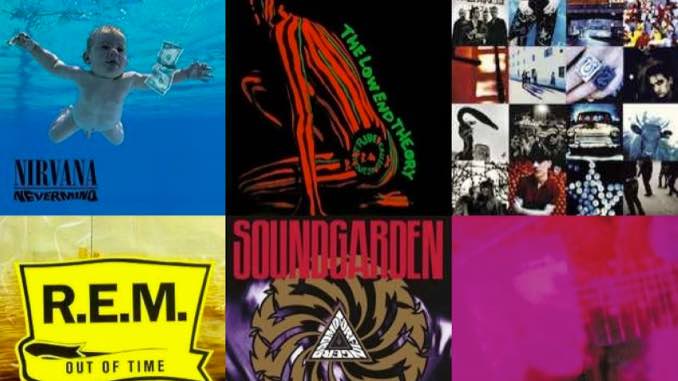
We think of 1991 as the year when the Seattle scene and its grunge phenomenon took over the rock world, but neither Pearl Jam’s Ten nor Nirvana’s Nevermind were immediate hits. It wasn’t until the following year when several singles took off that record label execs were trying to sign every grunge-adjacent act in America, and Weird Al was singing, “It’s hard to bargle nawdle zouss/With all these marbles in my mouth.” But there was plenty of other great music to be found as the 1990s began to take shape. My Bloody Valentine and A Tribe Called Quest both released their masterpieces. U2 and R.E.M. were making the most of their newfound superstardom. And several bands proved you didn’t need a big budget or radio airplay to produce amazing music. The Paste staff and writers has looked back 30 years and voted on our 30 favorite albums of 1991.
30. Hole: Pretty on the Inside Courtney Love is one of the most reviled figures in music, a conversation that does not leave much room for her compelling artistry as lead singer and rhythm guitarist of Hole. Love’s dissections of womanhood are beautifully disgusting as they come together like a haunted Victorian painting, or rather a postmodern feminist critique that is as bleak as it is profound. Although Love has distanced herself from the record, it still holds up as an uncompromising look into pain disguised as abrasive noise with a beauty resting underneath that Love, or rather the album’s unnamed narrator, cannot see. Its New York no-wave and art-rock inspirations are made clear, distancing itself from the more conventional rock releases of the time and creating one of the most poignant feminist works alongside the likes of Patti Smith and Sylvia Plath. —Jade Gomez
Courtney Love is one of the most reviled figures in music, a conversation that does not leave much room for her compelling artistry as lead singer and rhythm guitarist of Hole. Love’s dissections of womanhood are beautifully disgusting as they come together like a haunted Victorian painting, or rather a postmodern feminist critique that is as bleak as it is profound. Although Love has distanced herself from the record, it still holds up as an uncompromising look into pain disguised as abrasive noise with a beauty resting underneath that Love, or rather the album’s unnamed narrator, cannot see. Its New York no-wave and art-rock inspirations are made clear, distancing itself from the more conventional rock releases of the time and creating one of the most poignant feminist works alongside the likes of Patti Smith and Sylvia Plath. —Jade Gomez
29. Richard Thompson: Rumor & Sigh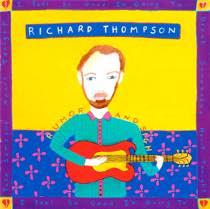 As on Randy Newman’s best albums, Thompson creates a gallery of maladjusted young lovers who sabotage their own romantic prospects with their warped mindsets. As on Ry Cooder’s best albums, the guitar work is at once both rootsy and virtuosic. Adroitly balancing laugh-out-loud humor and breath-stopping viciousness, Thompson brings it all together on one of his best written and best sounding albums. —Geoffrey Himes
As on Randy Newman’s best albums, Thompson creates a gallery of maladjusted young lovers who sabotage their own romantic prospects with their warped mindsets. As on Ry Cooder’s best albums, the guitar work is at once both rootsy and virtuosic. Adroitly balancing laugh-out-loud humor and breath-stopping viciousness, Thompson brings it all together on one of his best written and best sounding albums. —Geoffrey Himes
28. Mercury Rev: Yerself Is Steam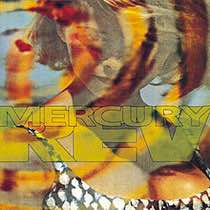 The success of grunge sent shockwaves through the music industry as A&R reps found an opening to help some truly oddball bands get major label money—all with the promise that they had found “the next Nirvana.” How then to explain the arrival of Yerself Is Steam on Columbia Records four months before Nevermind? The debut album from Buffalo, New York band Mercury Rev is an uncompromising slab of neo-psychedelia, with guitar feedback and devastating volume that gush like a waterfall over spiraling flute melodies and the freeform poetic squeaks and groans of vocalist David Baker. There’s beauty and majesty throughout, presaging the more accessible sound of Deserter’s Songs, but it’s often undercut with ugliness or twisted into disturbing shapes. The payoff was buried in the hidden tracks on the CD version: “Car Wash Hair,” a Dean Wareham-assisted love song that was lucid and sensual. The trick is that you need the blurry, bright highs that the rest of the album provides to truly appreciate the come-down. —Robert Ham
The success of grunge sent shockwaves through the music industry as A&R reps found an opening to help some truly oddball bands get major label money—all with the promise that they had found “the next Nirvana.” How then to explain the arrival of Yerself Is Steam on Columbia Records four months before Nevermind? The debut album from Buffalo, New York band Mercury Rev is an uncompromising slab of neo-psychedelia, with guitar feedback and devastating volume that gush like a waterfall over spiraling flute melodies and the freeform poetic squeaks and groans of vocalist David Baker. There’s beauty and majesty throughout, presaging the more accessible sound of Deserter’s Songs, but it’s often undercut with ugliness or twisted into disturbing shapes. The payoff was buried in the hidden tracks on the CD version: “Car Wash Hair,” a Dean Wareham-assisted love song that was lucid and sensual. The trick is that you need the blurry, bright highs that the rest of the album provides to truly appreciate the come-down. —Robert Ham
27. Ned’s Atomic Dustbin: God Fodder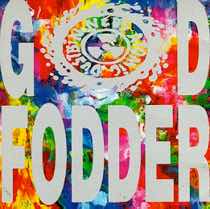 The British music press have to label everything. For a brief blip around 1990 or so those mags were going on and on about something called “grebo”—a so-called scene of bands, generally from the middle of England, who played a kind of music equally influenced by punk, dance music, and early electro. Perhaps the most overtly “rocking” of those bands—and thus one of the few who crossed over to America—was Ned’s Atomic Dustbin, who landed minor MTV airplay with the God Fodder song “Grey Cell Green.” Ned’s basically played catchy, energetic punk, but with two bass guitars leading to a uniquely rich and melodic sound. God Fodder is the kind of record that hits perfectly if you’re 13 or 14 and just starting to get a bit of a chip on your shoulder about, well, everything. —Garrett Martin
The British music press have to label everything. For a brief blip around 1990 or so those mags were going on and on about something called “grebo”—a so-called scene of bands, generally from the middle of England, who played a kind of music equally influenced by punk, dance music, and early electro. Perhaps the most overtly “rocking” of those bands—and thus one of the few who crossed over to America—was Ned’s Atomic Dustbin, who landed minor MTV airplay with the God Fodder song “Grey Cell Green.” Ned’s basically played catchy, energetic punk, but with two bass guitars leading to a uniquely rich and melodic sound. God Fodder is the kind of record that hits perfectly if you’re 13 or 14 and just starting to get a bit of a chip on your shoulder about, well, everything. —Garrett Martin
26. Fugazi: Steady Diet of Nothing Merely a good Fugazi album, but a great album in general, Steady Diet of Nothing was Ian MacKaye and company’s second studio full-length, and their first self-produced effort (frequent collaborator Ted Niceley was unavailable). The resulting mix may not be particularly slick, but it’s fitting that the album is rough around the edges: The caustic guitars of “Latin Roots” and “Reclamation” glow like heated metal, while MacKaye addresses Supreme Court justice William Brennan by name on “Dear Justice Letter” (“I won’t go die politely,” he insists). And the relatively subdued “Long Division,” in particular, has aged like fine wine in these hyper-polarized times. —Scott Russell
Merely a good Fugazi album, but a great album in general, Steady Diet of Nothing was Ian MacKaye and company’s second studio full-length, and their first self-produced effort (frequent collaborator Ted Niceley was unavailable). The resulting mix may not be particularly slick, but it’s fitting that the album is rough around the edges: The caustic guitars of “Latin Roots” and “Reclamation” glow like heated metal, while MacKaye addresses Supreme Court justice William Brennan by name on “Dear Justice Letter” (“I won’t go die politely,” he insists). And the relatively subdued “Long Division,” in particular, has aged like fine wine in these hyper-polarized times. —Scott Russell
25. Uncle Tupelo: Still Feel Gone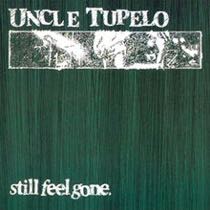 It’s hard to believe that when Jeff Tweedy and Jay Farrar first formed a band, neither was the lead singer. That honor went to Jay’s brother Wade. When he left for college, the remaining trio (including drummer Mike Heidorn) formed Uncle Tupelo, helping define a new alt-country genre with their debut No Depression. But their follow-up, Still Feel Gone showed more of their punk roots, taking those Appalachian sounds and cranking them up to 11. They even had a song called “D. Boon,” after the frontman of The Minutemen, who was killed in a car crash at the age of 27. A handful of bands, from Dash Rip Rock to Jason and the Scorchers, were playing a similar kind of cowpunk, but Uncle Tupelo took the genre to new heights, eventually splitting off into Wilco (Tweedy) and Son Volt (Farrar) after just four albums. This was the punkest of them all. —Josh Jackson
It’s hard to believe that when Jeff Tweedy and Jay Farrar first formed a band, neither was the lead singer. That honor went to Jay’s brother Wade. When he left for college, the remaining trio (including drummer Mike Heidorn) formed Uncle Tupelo, helping define a new alt-country genre with their debut No Depression. But their follow-up, Still Feel Gone showed more of their punk roots, taking those Appalachian sounds and cranking them up to 11. They even had a song called “D. Boon,” after the frontman of The Minutemen, who was killed in a car crash at the age of 27. A handful of bands, from Dash Rip Rock to Jason and the Scorchers, were playing a similar kind of cowpunk, but Uncle Tupelo took the genre to new heights, eventually splitting off into Wilco (Tweedy) and Son Volt (Farrar) after just four albums. This was the punkest of them all. —Josh Jackson
24. Dinosaur Jr.: Green Mind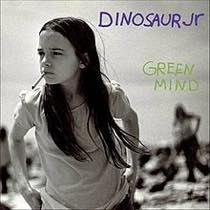 For years, the prevailing hipster wisdom was that Dinosaur Jr.’s major label records are J Mascis solo albums in all but name and not worth your time. Well, one out of two isn’t wrong. Green Mind is essentially a solo record—after the acrimonious firing of Lou Barlow, Mascis evidently realized he could avoid creative squabbles by playing nearly every instrument himself, employing the services of drummer Murph on just a few tracks. Mascis had always been a consummate melodicist of the ’80s underground, but Green Mind was the first Dino album where the melodies weren’t buried beneath ear-bleeding feedback and sludge. The ripping single “The Wagon” deservedly helped the group catch the ear of MTV, while psychedelic dalliances like “Flying Cloud” and “Thumb” broadened the band’s sound with acoustic guitars and ringing mellotrons. As for Mascis, there’s a certain endearing tension between the artistry and skill of his guitar wizardry and the couldn’t-possibly-care-less mumble of his vocals. —Zach Schonfeld
For years, the prevailing hipster wisdom was that Dinosaur Jr.’s major label records are J Mascis solo albums in all but name and not worth your time. Well, one out of two isn’t wrong. Green Mind is essentially a solo record—after the acrimonious firing of Lou Barlow, Mascis evidently realized he could avoid creative squabbles by playing nearly every instrument himself, employing the services of drummer Murph on just a few tracks. Mascis had always been a consummate melodicist of the ’80s underground, but Green Mind was the first Dino album where the melodies weren’t buried beneath ear-bleeding feedback and sludge. The ripping single “The Wagon” deservedly helped the group catch the ear of MTV, while psychedelic dalliances like “Flying Cloud” and “Thumb” broadened the band’s sound with acoustic guitars and ringing mellotrons. As for Mascis, there’s a certain endearing tension between the artistry and skill of his guitar wizardry and the couldn’t-possibly-care-less mumble of his vocals. —Zach Schonfeld
23. Metallica: Metallica After evolving from bruising thrash to intricate prog-metal on 1988’s …And Justice for All, Metallica pivoted toward verse-chorus heaviness on their landmark fifth LP. The self-titled “Black Album” is a master class in cashing in without selling out: The California quartet worked with big-name producer Bob Rock (Mötley Crüe, Loverboy, David Lee Roth), who guided them to a more dynamic, dramatic sound. Metal fans salivated over Kirk Hammett’s demonic riff in “Enter Sandman”—and rightly so. But no one could have expected the melodic and emotional range found on signature ballads “Nothing Else Matters” and “The Unforgiven.” —Ryan Reed
After evolving from bruising thrash to intricate prog-metal on 1988’s …And Justice for All, Metallica pivoted toward verse-chorus heaviness on their landmark fifth LP. The self-titled “Black Album” is a master class in cashing in without selling out: The California quartet worked with big-name producer Bob Rock (Mötley Crüe, Loverboy, David Lee Roth), who guided them to a more dynamic, dramatic sound. Metal fans salivated over Kirk Hammett’s demonic riff in “Enter Sandman”—and rightly so. But no one could have expected the melodic and emotional range found on signature ballads “Nothing Else Matters” and “The Unforgiven.” —Ryan Reed
22. Talk Talk: Laughing Stock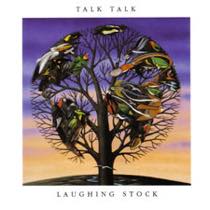 The godfathers of post-rock ended their brief, yet memorable tenure in the music world with this fifth and final album. It continued the work they did on 1988’s Spirit of Eden in further stripping away every last connection the group had to their pop past, and replacing it with an ambient-jazz hybrid built from exhausting recording sessions, continuous overdubs, and a heated, dense atmosphere akin to walking through a sticky rainforest. Many an artist has been chasing the same unsettled yet lush vibe that Laughing Stock gives off in the three decades since its release. No one has come anywhere close. —Robert Ham
The godfathers of post-rock ended their brief, yet memorable tenure in the music world with this fifth and final album. It continued the work they did on 1988’s Spirit of Eden in further stripping away every last connection the group had to their pop past, and replacing it with an ambient-jazz hybrid built from exhausting recording sessions, continuous overdubs, and a heated, dense atmosphere akin to walking through a sticky rainforest. Many an artist has been chasing the same unsettled yet lush vibe that Laughing Stock gives off in the three decades since its release. No one has come anywhere close. —Robert Ham
21. Van Morrison: Hymns to the Silence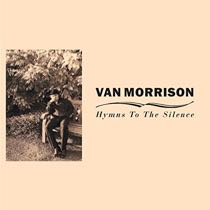 Hymns to the Silence is Van Morrison’s first and only double album, yet it remains one of the vocalist’s most underappreciated works in his catalog. “Why Must I Always Explain?”—a classy, Celtic-kissed highlight from its 94-minute sprawl—is its grandest gesture, a direct response to his critics at the time chiding him for not making all of his records sound exactly like Astral Weeks or Moondance. In many ways, however, it’s closer to the cloth of Tupelo Honey than anything else, ushering in one of Morrison’s best decades in the 1990s. —Ron Hart
Hymns to the Silence is Van Morrison’s first and only double album, yet it remains one of the vocalist’s most underappreciated works in his catalog. “Why Must I Always Explain?”—a classy, Celtic-kissed highlight from its 94-minute sprawl—is its grandest gesture, a direct response to his critics at the time chiding him for not making all of his records sound exactly like Astral Weeks or Moondance. In many ways, however, it’s closer to the cloth of Tupelo Honey than anything else, ushering in one of Morrison’s best decades in the 1990s. —Ron Hart
20. Neil Young and Crazy Horse: Weld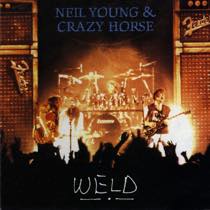 Maybe all you need to know about Weld, the live album by Neil Young and Crazy Horse that compiled performances from the band’s tour for Ragged Glory, is that Young permanently damaged his hearing mixing it. As he told biographer Jimmy McDonough, “I hurt my ears and they’ll never be the same again.” Weld is a loud document of some truly loud rock concerts. Not for nothing is the band pictured on the front cover performing next to some comically huge Fender amps. At the time, Young was being inspired by the twisty art rock of Sonic Youth and the hopped-up garage rock of his own youth. And he translated that into live shows of chest compressive volume, politicized rage and the powerful chemistry between him and the members of Crazy Horse. The material from Young’s then-recent albums Freedom and Ragged Glory sounds corrosive and dangerous, and the older material he worked into the set is given a forceful overhaul. Challenge yourself further by tracking down the three-disc version that comes with Arc, a 35-minute composition made from the between-song feedback and vocal asides recorded during the same tour. —Robert Ham
Maybe all you need to know about Weld, the live album by Neil Young and Crazy Horse that compiled performances from the band’s tour for Ragged Glory, is that Young permanently damaged his hearing mixing it. As he told biographer Jimmy McDonough, “I hurt my ears and they’ll never be the same again.” Weld is a loud document of some truly loud rock concerts. Not for nothing is the band pictured on the front cover performing next to some comically huge Fender amps. At the time, Young was being inspired by the twisty art rock of Sonic Youth and the hopped-up garage rock of his own youth. And he translated that into live shows of chest compressive volume, politicized rage and the powerful chemistry between him and the members of Crazy Horse. The material from Young’s then-recent albums Freedom and Ragged Glory sounds corrosive and dangerous, and the older material he worked into the set is given a forceful overhaul. Challenge yourself further by tracking down the three-disc version that comes with Arc, a 35-minute composition made from the between-song feedback and vocal asides recorded during the same tour. —Robert Ham
19. Primus: Sailing the Seas of Cheese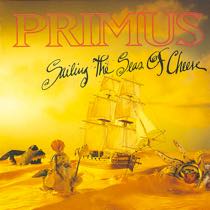 Everyone’s favorite alt-rock slash funk metal slash experimental post-punk weirdos, Primus went and made their best album just one year after making their first album, which is saying something because in the 30 years since, they’ve never made a bad album. But they’ve never made a record reaching the nirvanic bizarre-o heights of Sailing the Seas of Cheese, 45 minutes of the band at their best, their best being “Tommy the Cat” and their worst being “Is It Luck?” When that’s your worst, you’re in a pretty good place. Sailing the Seas of Cheese is remembered for its best, of course, not just “Tommy the Cat” — a first introduction to Tom Waits’ scuffed-up bullhorn vocals for many a young’un coming of age in the 90s—but “Sgt Baker.,” “Those Damn Blue Collar Tweakers,” and especially “Jerry Was a Race Car Driver,” where Les Claypool’s casual virtuosity takes the wheel for three minutes of punchy, pattering bliss. No matter what track you cue up, though, it’s all shipshape. —Andy Crump
Everyone’s favorite alt-rock slash funk metal slash experimental post-punk weirdos, Primus went and made their best album just one year after making their first album, which is saying something because in the 30 years since, they’ve never made a bad album. But they’ve never made a record reaching the nirvanic bizarre-o heights of Sailing the Seas of Cheese, 45 minutes of the band at their best, their best being “Tommy the Cat” and their worst being “Is It Luck?” When that’s your worst, you’re in a pretty good place. Sailing the Seas of Cheese is remembered for its best, of course, not just “Tommy the Cat” — a first introduction to Tom Waits’ scuffed-up bullhorn vocals for many a young’un coming of age in the 90s—but “Sgt Baker.,” “Those Damn Blue Collar Tweakers,” and especially “Jerry Was a Race Car Driver,” where Les Claypool’s casual virtuosity takes the wheel for three minutes of punchy, pattering bliss. No matter what track you cue up, though, it’s all shipshape. —Andy Crump
18. Massive Attack: Blue Lines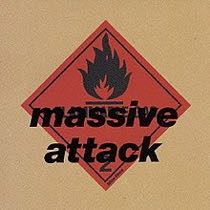 It’s no exaggeration to say trip-hop pioneers Massive Attack changed music at large with their debut album Blue Lines, fusing club beats and samples with dub instrumentation—a vast oversimplification of this act of musical alchemy. Opener “Safe From Harm” hypnotizes with its tightly coiled bassline and Shara Nelson’s soulful vocals, while “Unfinished Sympathy,” another Nelson vehicle, enchants with lush strings and placid synths, sounding closer to a finished symphony. It’s difficult to overstate the influence Massive Attack have wielded just by virtue of this first full-length, casting a shadow over meditative music of all kinds. —Scott Russell
It’s no exaggeration to say trip-hop pioneers Massive Attack changed music at large with their debut album Blue Lines, fusing club beats and samples with dub instrumentation—a vast oversimplification of this act of musical alchemy. Opener “Safe From Harm” hypnotizes with its tightly coiled bassline and Shara Nelson’s soulful vocals, while “Unfinished Sympathy,” another Nelson vehicle, enchants with lush strings and placid synths, sounding closer to a finished symphony. It’s difficult to overstate the influence Massive Attack have wielded just by virtue of this first full-length, casting a shadow over meditative music of all kinds. —Scott Russell
17. The Jesus Lizard: Goat Hitting with the subtlety of a bulldozer on fire, the Jesus Lizard’s second album helped restore some danger and volatility to rock after years of hair-metal glitziness. Thanks to Steve Albini’s visceral recording techniques, Goat is the rare noise-rock album that captures the sheer explosive force of the band’s live prowess, right down to David Yow’s deranged vocal vocabulary of grunts, shrieks and death rattles. Musically, the record is anything but streamlined, boasting damaged classics like the queasy shipwreck anthem “Seasick” (take that, sea shanty TikTok) and the pummeling insult generator “Mouth Breather.” Among the band’s fiercest admirers was Kurt Cobain, who approvingly cited Goat when hiring Albini for his own band’s In Utero. —Zach Schonfeld
Hitting with the subtlety of a bulldozer on fire, the Jesus Lizard’s second album helped restore some danger and volatility to rock after years of hair-metal glitziness. Thanks to Steve Albini’s visceral recording techniques, Goat is the rare noise-rock album that captures the sheer explosive force of the band’s live prowess, right down to David Yow’s deranged vocal vocabulary of grunts, shrieks and death rattles. Musically, the record is anything but streamlined, boasting damaged classics like the queasy shipwreck anthem “Seasick” (take that, sea shanty TikTok) and the pummeling insult generator “Mouth Breather.” Among the band’s fiercest admirers was Kurt Cobain, who approvingly cited Goat when hiring Albini for his own band’s In Utero. —Zach Schonfeld
16. PM Dawn: Of the Heart, Of the Soul, and of the Cross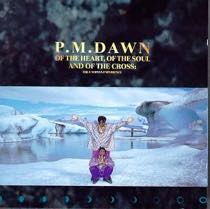 Every musical genre inevitably draws naysayers and their familiar refrain of “but that stuff isn’t music.” By the same token, every genre eventually produces acts that would force even the most ardent haters to concede that there’s something there they can’t dismiss. When it comes to rap music, P.M. Dawn fit that bill to a tee. If we’re being honest, hip-hop artists had already achieved staggering levels of innovation and musicality by 1991, when P.M. Dawn made their full-length debut with Of the Heart, of the Soul and of the Cross: The Utopian Experience. (Not to mention that Soul II Soul had already introduced the masses to a similarly smooth, neo soul-tinged blend of rap, R&B and dance music.) Still, even 30 years later, the album serves as a yardstick for how to buck against the limitations that musical subcultures tend to impose on themselves. Unabashedly melodic and lovey-dovey with an over-the-top flamboyance that made Prince and Terence Trent D’Arby look reserved, P.M. Dawn planted their freak flag as far from the street-tough/gangsa archetype as one could possibly get. Though most famous for the chart-topping hit “Set Adrift on Memory Bliss” (which marries the iconic drum break from the Soul Searchers’ 1974 jazz-funk instrumental “Ashley’s Roachclip” to the vocal hook from Spandau Ballet’s ’80s-pop smash “True”), the album is truly meant to be experienced as a whole sonic universe of its own. —Saby Reyes-Kulkarni
Every musical genre inevitably draws naysayers and their familiar refrain of “but that stuff isn’t music.” By the same token, every genre eventually produces acts that would force even the most ardent haters to concede that there’s something there they can’t dismiss. When it comes to rap music, P.M. Dawn fit that bill to a tee. If we’re being honest, hip-hop artists had already achieved staggering levels of innovation and musicality by 1991, when P.M. Dawn made their full-length debut with Of the Heart, of the Soul and of the Cross: The Utopian Experience. (Not to mention that Soul II Soul had already introduced the masses to a similarly smooth, neo soul-tinged blend of rap, R&B and dance music.) Still, even 30 years later, the album serves as a yardstick for how to buck against the limitations that musical subcultures tend to impose on themselves. Unabashedly melodic and lovey-dovey with an over-the-top flamboyance that made Prince and Terence Trent D’Arby look reserved, P.M. Dawn planted their freak flag as far from the street-tough/gangsa archetype as one could possibly get. Though most famous for the chart-topping hit “Set Adrift on Memory Bliss” (which marries the iconic drum break from the Soul Searchers’ 1974 jazz-funk instrumental “Ashley’s Roachclip” to the vocal hook from Spandau Ballet’s ’80s-pop smash “True”), the album is truly meant to be experienced as a whole sonic universe of its own. —Saby Reyes-Kulkarni
15. Red Hot Chili Peppers: Blood Sugar Sex Magik After several lineup changes, the Red Hot Chili Peppers settled into their most well-known and reactive lineup with Anthony Kiedis, Flea, Chad Smith and John Frusciante. Rick Rubin, known for producing for some of the most seminal hip-hop artists such as the Beastie Boys and LL Cool J, was recruited to transform the Peppers’ rough-edged funk sound into a controlled explosion of heavy metal, art rock, funk, and blues influences which helped mark a turning point for the decade’s alternative sound. As grunge was on the rise, Blood Sugar Sex Magik presented a colorful array of sounds that dug deep into Kiedis’ psyche and drug usage three years since the passing of Hillel Slovak, an event that inspired his sobriety. The album’s progression from their classic funk sound interspersed with lush acoustics that cradle Kiedis’ voice takes a hard turn into brooding tracks such as “The Righteous & the Wicked” and “Blood Sugar Sex Magik,” both of which defy genre in their simmering intensity, showing a side of the band that had not been seen before. Blood Sugar Sex Magik helped define a decade and cemented the Red Hot Chili Peppers as the funked-out, sex-crazed rock powerhouses they are today. —Jade Gomez
After several lineup changes, the Red Hot Chili Peppers settled into their most well-known and reactive lineup with Anthony Kiedis, Flea, Chad Smith and John Frusciante. Rick Rubin, known for producing for some of the most seminal hip-hop artists such as the Beastie Boys and LL Cool J, was recruited to transform the Peppers’ rough-edged funk sound into a controlled explosion of heavy metal, art rock, funk, and blues influences which helped mark a turning point for the decade’s alternative sound. As grunge was on the rise, Blood Sugar Sex Magik presented a colorful array of sounds that dug deep into Kiedis’ psyche and drug usage three years since the passing of Hillel Slovak, an event that inspired his sobriety. The album’s progression from their classic funk sound interspersed with lush acoustics that cradle Kiedis’ voice takes a hard turn into brooding tracks such as “The Righteous & the Wicked” and “Blood Sugar Sex Magik,” both of which defy genre in their simmering intensity, showing a side of the band that had not been seen before. Blood Sugar Sex Magik helped define a decade and cemented the Red Hot Chili Peppers as the funked-out, sex-crazed rock powerhouses they are today. —Jade Gomez
14. Primal Scream: Screamadelica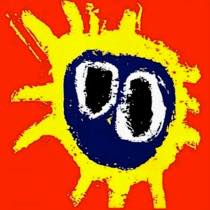 Screamadelica is often viewed as Primal Scream’s dance album, but this description only paints a partial picture. The “delica” in the title gets closer to the point: The proto-trip-hop of “Higher Than the Sun,” the Beatles-meets-Lynch balladry of “Inner Flight” and the endorphin surges of radio hit “Movin’ on Up” are all at least somewhat hallucinogenic, but none of them would work on the dancefloor. Screamadelica’s magic is that these traditionally gorgeous moments exist cohesively alongside equally psychedelic but far more house-indebted music. Electronics dominate “Don’t Fight It, Feel It,” “Loaded,” the U.K. mix of “Come Together” and the 13th Floor Elevators cover “Slip Inside This House,” all of which are as trippy as they are groovy. Screamadelica will get you moving, and then it’ll entrance you—and at its best, it does both. —Max Freedman
Screamadelica is often viewed as Primal Scream’s dance album, but this description only paints a partial picture. The “delica” in the title gets closer to the point: The proto-trip-hop of “Higher Than the Sun,” the Beatles-meets-Lynch balladry of “Inner Flight” and the endorphin surges of radio hit “Movin’ on Up” are all at least somewhat hallucinogenic, but none of them would work on the dancefloor. Screamadelica’s magic is that these traditionally gorgeous moments exist cohesively alongside equally psychedelic but far more house-indebted music. Electronics dominate “Don’t Fight It, Feel It,” “Loaded,” the U.K. mix of “Come Together” and the 13th Floor Elevators cover “Slip Inside This House,” all of which are as trippy as they are groovy. Screamadelica will get you moving, and then it’ll entrance you—and at its best, it does both. —Max Freedman
13. Prince & the New Power Generation: Diamonds and Pearls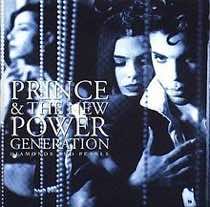 In retrospect, the most amazing thing about Prince was his ability to push artistic boundaries with reckless experimentation and at the same time sell millions of records. He could take a pop formula such as the romantic-ballad duet—fill it with eccentric bass lines, synth reveries and dynamic shifts—and still push it to #3 on the pop charts, as he did with this album’s title-track collaboration with Rosie Gaines. He could try his hand at a raunchy hip-hop number like “Gett Off,” fill it with surprises and James Brown allusions, and still take it to #21. He could concoct a sex dream like “Cream,” mixing his whispers and moaning with head-crunching drums and blues-rock guitar, and make it a #1 single. This was his final album before changing his name to an unpronounceable glyph. —Geoffrey Himes
In retrospect, the most amazing thing about Prince was his ability to push artistic boundaries with reckless experimentation and at the same time sell millions of records. He could take a pop formula such as the romantic-ballad duet—fill it with eccentric bass lines, synth reveries and dynamic shifts—and still push it to #3 on the pop charts, as he did with this album’s title-track collaboration with Rosie Gaines. He could try his hand at a raunchy hip-hop number like “Gett Off,” fill it with surprises and James Brown allusions, and still take it to #21. He could concoct a sex dream like “Cream,” mixing his whispers and moaning with head-crunching drums and blues-rock guitar, and make it a #1 single. This was his final album before changing his name to an unpronounceable glyph. —Geoffrey Himes
12. Slint: Spiderland The power of Slint’s final recorded statement is in the band’s use of negative space. The emptiness between each note and each forceful slap of drummer Britt Walford’s snare. Those brief pauses before the band lurches forward to unleash a torrent of volume and drama. The deathly quiet that lingers through each of Brian McMahan song-stories. For all of the stoned, smirking joy the four members of the group exude on the now-iconic cover photo for Spiderland, the album evokes frozen landscapes, dark basements and grey skies threatening rain. Though Walford, McMahan, guitarist David Pajo and bassist Todd Brashear came up through the Louisville punk scene, they used Black Sabbath’s doom and King Crimson’s dynamic psychedelia as fuel for Slint and, in doing so, laid the template for the entire post-rock genre that was formed in their wake. The band split soon after Spiderland was released and have occasionally reformed, but never with a mind toward making new music. Even they know that any attempt to top this masterpiece will only result in disappointment. —Robert Ham
The power of Slint’s final recorded statement is in the band’s use of negative space. The emptiness between each note and each forceful slap of drummer Britt Walford’s snare. Those brief pauses before the band lurches forward to unleash a torrent of volume and drama. The deathly quiet that lingers through each of Brian McMahan song-stories. For all of the stoned, smirking joy the four members of the group exude on the now-iconic cover photo for Spiderland, the album evokes frozen landscapes, dark basements and grey skies threatening rain. Though Walford, McMahan, guitarist David Pajo and bassist Todd Brashear came up through the Louisville punk scene, they used Black Sabbath’s doom and King Crimson’s dynamic psychedelia as fuel for Slint and, in doing so, laid the template for the entire post-rock genre that was formed in their wake. The band split soon after Spiderland was released and have occasionally reformed, but never with a mind toward making new music. Even they know that any attempt to top this masterpiece will only result in disappointment. —Robert Ham
11. Teenage Fanclub: Bandwagonesque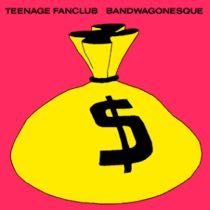 Teenage Fanclub had an unlikely U.S. hit with their second album, an homage to the brilliant power-pop of Big Star with enough guitar noise to fit in on college radio and the then-nascent alternative radio format. With Bandwagonesque Teenage Fanclub’s three main songwriters had all matured into pristine pop craftsmen, resulting in a sad, jubilant, ultimately humble record full of amazing songs. Today they seem like one of the least likely bands to ever play on SNL, but in 1991 and ’92 it made sense. —Garrett Martin
Teenage Fanclub had an unlikely U.S. hit with their second album, an homage to the brilliant power-pop of Big Star with enough guitar noise to fit in on college radio and the then-nascent alternative radio format. With Bandwagonesque Teenage Fanclub’s three main songwriters had all matured into pristine pop craftsmen, resulting in a sad, jubilant, ultimately humble record full of amazing songs. Today they seem like one of the least likely bands to ever play on SNL, but in 1991 and ’92 it made sense. —Garrett Martin
10. Matthew Sweet: Girlfriend By the time Sweet released his post-divorce, power-pop masterpiece, he’d already collaborated with Michael Stipe back in Athens with Community Trolls and released a trio of solo records. But it was the sugary hook after sugary hook on Girlfriend that gained him wider acclaim. Songs like “I’ve Been Waiting,” “Evangeline” and the title track have the kind of melodies that that should come wrapped in aluminum foil and sold next to the Reese’s Cups. —Josh Jackson
By the time Sweet released his post-divorce, power-pop masterpiece, he’d already collaborated with Michael Stipe back in Athens with Community Trolls and released a trio of solo records. But it was the sugary hook after sugary hook on Girlfriend that gained him wider acclaim. Songs like “I’ve Been Waiting,” “Evangeline” and the title track have the kind of melodies that that should come wrapped in aluminum foil and sold next to the Reese’s Cups. —Josh Jackson
9. Pixies: Trompe le Monde We’ve all been exposed to innumerable accounts telling us why 1991 heralded a sea-change in the pop-culture landscape. The fact is, though, that we could point to 1988 as the actual turning point, with landmark albums by the likes of Jane’s Addiction, Sonic Youth, My Bloody Valentine, Ministry and, of course, the Pixies all lobbed like cannonballs at the gates of the mainstream. It’s ironic that Trompe Le Monde was released just three years later, the day before Nirvana’s Nevermind as the Pixies were headed for a breakup. By that point, the seminal Boston quartet were one step ahead of a trend they paved the way for by the time the trend took off. Listening back to the blockbusters that came out alongside Trompe Le Monde, it’s no surprise that a group this quirky created something that sounds so defiantly odd by comparison. It’s also no great shock that Trompe Le Monde’s startlingly fresh modernization of traditional rock and roll rivals the visionary early work by Los Angeles punkers X. On the other hand, there are aspects of Trompe Le Monde that sound even more commercial than the records that struck paydirt. Is there any justification for why a song like “U-Mass” isn’t a radio staple today? No—but it’s probably a good thing that it isn’t, because that leaves Trompe Le Monde as an untarnished treasure, always beckoning to be re-discovered. —Saby Reyes-Kulkarni
We’ve all been exposed to innumerable accounts telling us why 1991 heralded a sea-change in the pop-culture landscape. The fact is, though, that we could point to 1988 as the actual turning point, with landmark albums by the likes of Jane’s Addiction, Sonic Youth, My Bloody Valentine, Ministry and, of course, the Pixies all lobbed like cannonballs at the gates of the mainstream. It’s ironic that Trompe Le Monde was released just three years later, the day before Nirvana’s Nevermind as the Pixies were headed for a breakup. By that point, the seminal Boston quartet were one step ahead of a trend they paved the way for by the time the trend took off. Listening back to the blockbusters that came out alongside Trompe Le Monde, it’s no surprise that a group this quirky created something that sounds so defiantly odd by comparison. It’s also no great shock that Trompe Le Monde’s startlingly fresh modernization of traditional rock and roll rivals the visionary early work by Los Angeles punkers X. On the other hand, there are aspects of Trompe Le Monde that sound even more commercial than the records that struck paydirt. Is there any justification for why a song like “U-Mass” isn’t a radio staple today? No—but it’s probably a good thing that it isn’t, because that leaves Trompe Le Monde as an untarnished treasure, always beckoning to be re-discovered. —Saby Reyes-Kulkarni
8. Soundgarden: Badmotorfinger For the grunge purists, Soundgarden is a frequent point of contention. The band had always been on the heavy metal side of the genre with Chris Cornell’s bone-rattling vocals presenting a good case for why they did. Badmotorfinger is an essay in violence and chaos as Cornell and guitarist Kim Thayil wrestle for control amongst wah pedals and odd time signatures that feel perfectly natural amongst the debris of Soundgarden’s reckoning. Upon further inspection, even the aforementioned violence is stripped into its bones as Cornell scathingly critiques issues of religion and depression with scholarly precision and abstract delivery. Soundgarden never felt the need to play along with labels, frequently veering into lanes of psychedelia and progressive rock, to create a thesis on their agility and chemistry as a band. —Jade Gomez
For the grunge purists, Soundgarden is a frequent point of contention. The band had always been on the heavy metal side of the genre with Chris Cornell’s bone-rattling vocals presenting a good case for why they did. Badmotorfinger is an essay in violence and chaos as Cornell and guitarist Kim Thayil wrestle for control amongst wah pedals and odd time signatures that feel perfectly natural amongst the debris of Soundgarden’s reckoning. Upon further inspection, even the aforementioned violence is stripped into its bones as Cornell scathingly critiques issues of religion and depression with scholarly precision and abstract delivery. Soundgarden never felt the need to play along with labels, frequently veering into lanes of psychedelia and progressive rock, to create a thesis on their agility and chemistry as a band. —Jade Gomez
7. De La Soul: De La Soul Is Dead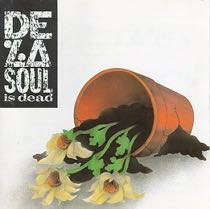 Maybe you prefer De La Soul’s flower child side on 3 Feet High and Rising; maybe you prefer your De La Soul 6 feet under. But it’s unimpeachably true that De La Soul Is Dead does a masterful job separating Posdnuos, Trugoy and Maseo from the identities foisted on them by critics, fans, and Arsenio Hall post-3 Feet High and Rising. Hippie hop indeed. On De La Soul Is Dead, the trio kick over their pot of daisies and get very semi-serious, rebuking the personas glued to them after their 1989 debut: The soul is intact, the humor’s still there, Prince Paul’s playful, rhythmic, dextrous production is there, but these qualities come accompanied by sarcasm, sharp barbs for lazy culture critiques, and smart musicianship designed to defy them. There’s no better way of breaking away from the image pop culture has assigned you than killing it. —Andy Crump
Maybe you prefer De La Soul’s flower child side on 3 Feet High and Rising; maybe you prefer your De La Soul 6 feet under. But it’s unimpeachably true that De La Soul Is Dead does a masterful job separating Posdnuos, Trugoy and Maseo from the identities foisted on them by critics, fans, and Arsenio Hall post-3 Feet High and Rising. Hippie hop indeed. On De La Soul Is Dead, the trio kick over their pot of daisies and get very semi-serious, rebuking the personas glued to them after their 1989 debut: The soul is intact, the humor’s still there, Prince Paul’s playful, rhythmic, dextrous production is there, but these qualities come accompanied by sarcasm, sharp barbs for lazy culture critiques, and smart musicianship designed to defy them. There’s no better way of breaking away from the image pop culture has assigned you than killing it. —Andy Crump
6. R.E.M.: Out of Time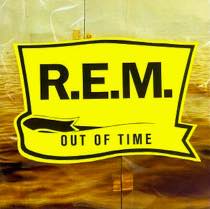 Almost exactly a decade after recording their first single, “Radio Free Europe,” R.E.M. released their seventh—and biggest—LP, Out of Time—their first #1 album in both the U.S. and the UK thanks in part to its lead single, “Losing My Religion.” They expanded their sound with Mark Bingham’s string arrangements plus The B-52’s Kate Pierson lending vocals to “Shiny Happy People,” “Me in Honey” and “Near Wild Heaven,” and KRS-One rapping on “Radio Song.” Peter Buck picked up a mandolin for a couple of tracks, which inspired me (and plenty of others) to do the same. The album resulted in three Grammys for the Athens, Ga. quartet. More importantly, a petition on the back of the packaging encouraged fans to support Rock the Vote’s efforts to make voter registration easier. —Josh Jackson
Almost exactly a decade after recording their first single, “Radio Free Europe,” R.E.M. released their seventh—and biggest—LP, Out of Time—their first #1 album in both the U.S. and the UK thanks in part to its lead single, “Losing My Religion.” They expanded their sound with Mark Bingham’s string arrangements plus The B-52’s Kate Pierson lending vocals to “Shiny Happy People,” “Me in Honey” and “Near Wild Heaven,” and KRS-One rapping on “Radio Song.” Peter Buck picked up a mandolin for a couple of tracks, which inspired me (and plenty of others) to do the same. The album resulted in three Grammys for the Athens, Ga. quartet. More importantly, a petition on the back of the packaging encouraged fans to support Rock the Vote’s efforts to make voter registration easier. —Josh Jackson
5. Pearl Jam: Ten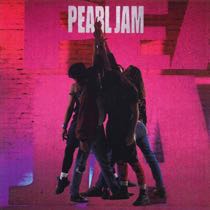 If grunge veterans Pearl Jam—the only grunge act that continued to thrive into the new millennium—are often misunderstood and maligned today, that sentiment was even more true in the early ’90s during the grunge explosion. Though the quintet’s debut album Ten was released a few months before fellow Seattle band Nirvana’s Nevermind, it didn’t become popular until after that album’s landmark success, and thus was unfairly written off by critics and listeners alike as a ripoff of the entire movement. Pearl Jam have since shown they are far from corporate cash-ins, evident in their boycott of Ticketmaster and relatively diverse body of work, but Ten is where the band’s journey began. Melding muscular riffs and arrangements, stellar musicianship, and Eddie Vedder’s inspired lyrical and vocal passion, Ten contains most of Pearl Jam’s most beloved classics, including “Jeremy,” “Alive,” “Even Flow” and “Black.” As far as debut albums go, Pearl Jam came roaring out of the gates and have arguably yet to top it despite releasing albums of consistent quality to this day. In the process, they proved grunge was its own distinctive animal, combining the brooding aggression of punk and post-punk with the soaring, anthemic hooks of vintage ’70s rock.—John Barrett
If grunge veterans Pearl Jam—the only grunge act that continued to thrive into the new millennium—are often misunderstood and maligned today, that sentiment was even more true in the early ’90s during the grunge explosion. Though the quintet’s debut album Ten was released a few months before fellow Seattle band Nirvana’s Nevermind, it didn’t become popular until after that album’s landmark success, and thus was unfairly written off by critics and listeners alike as a ripoff of the entire movement. Pearl Jam have since shown they are far from corporate cash-ins, evident in their boycott of Ticketmaster and relatively diverse body of work, but Ten is where the band’s journey began. Melding muscular riffs and arrangements, stellar musicianship, and Eddie Vedder’s inspired lyrical and vocal passion, Ten contains most of Pearl Jam’s most beloved classics, including “Jeremy,” “Alive,” “Even Flow” and “Black.” As far as debut albums go, Pearl Jam came roaring out of the gates and have arguably yet to top it despite releasing albums of consistent quality to this day. In the process, they proved grunge was its own distinctive animal, combining the brooding aggression of punk and post-punk with the soaring, anthemic hooks of vintage ’70s rock.—John Barrett
4. U2: Achtung Baby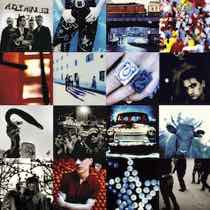 Musical reinventions are rarely as bold and expansive as Achtung Baby, U2’s 1991 grand-slam. Working with the holy triumvirate production crew of Daniel Lanois, Steve Lillywhite and Brian Eno, Dublin’s finest followed-up the gritty retro patchwork of Rattle and Hum with a layered sonic melting pot that sprawled gloriously into electronica (“Zoo Station,” “The Fly”) , psychedelic pop (“Even Better Than the Real Thing,” “Mysterious Ways”), and grand, lighter-waving balladry (“One”). What’s so staggering is that they managed to pull off each and every stylistic about-face—and that the album as a whole feels not disconnected from all its disparate parts but resoundingly epic. Bono once described “The Fly” as “the sound of four men chopping down The Joshua Tree.” Indeed, Achtung Baby feels self-consciously (and perhaps overly) ambitious, as if the world’s biggest band desperately wanted to avoid repeating themselves. But that desperation, that ambition—it’s what makes Achtung Baby such a mesmerizing experience.—Ryan Reed
Musical reinventions are rarely as bold and expansive as Achtung Baby, U2’s 1991 grand-slam. Working with the holy triumvirate production crew of Daniel Lanois, Steve Lillywhite and Brian Eno, Dublin’s finest followed-up the gritty retro patchwork of Rattle and Hum with a layered sonic melting pot that sprawled gloriously into electronica (“Zoo Station,” “The Fly”) , psychedelic pop (“Even Better Than the Real Thing,” “Mysterious Ways”), and grand, lighter-waving balladry (“One”). What’s so staggering is that they managed to pull off each and every stylistic about-face—and that the album as a whole feels not disconnected from all its disparate parts but resoundingly epic. Bono once described “The Fly” as “the sound of four men chopping down The Joshua Tree.” Indeed, Achtung Baby feels self-consciously (and perhaps overly) ambitious, as if the world’s biggest band desperately wanted to avoid repeating themselves. But that desperation, that ambition—it’s what makes Achtung Baby such a mesmerizing experience.—Ryan Reed
3. A Tribe Called Quest: The Low End Theory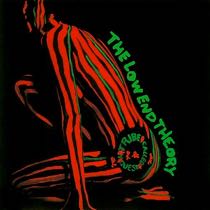 A Tribe Called Quest shed their semi-hippie image on their sophomore release and embraced the “conscious,” jazz-sampling sound that would mark the rest of the group’s career. The Low End Theory ranks up there with the greatest hip-hop albums of all time. Q-Tip and Phife, still on good terms at the time, shared the microphone more naturally than Run DMC, and songs like “Jazz,” “Check the Rhime” and “Buggin’ Out” featured production built upon a back catalogue of jazz samples that probably made Madlib drool. And who can forget “Scenario,” which remains, to this day, the very best hip-hop posse track.—Jonah Flicker
A Tribe Called Quest shed their semi-hippie image on their sophomore release and embraced the “conscious,” jazz-sampling sound that would mark the rest of the group’s career. The Low End Theory ranks up there with the greatest hip-hop albums of all time. Q-Tip and Phife, still on good terms at the time, shared the microphone more naturally than Run DMC, and songs like “Jazz,” “Check the Rhime” and “Buggin’ Out” featured production built upon a back catalogue of jazz samples that probably made Madlib drool. And who can forget “Scenario,” which remains, to this day, the very best hip-hop posse track.—Jonah Flicker
2. My Bloody Valentine: Loveless It’s hard to think of an album in the ’90s whose genesis created as much frustration, effort, money and, ultimately, critical acclaim as My Bloody Valentine’s Loveless. The album, which was recorded in 19 studios and briefly employed gobs of recording engineers over two years, took all of this effort for a reason: Nothing else sounded remotely like it when it was released. Kevin Shields’ shapeless, impossibly distorted guitar parts perfectly complemented vocalist Bilinda Butcher’s whispered melodies that played up the idea of using a voice as an instrument. Loveless’ most iconic tracks, the shrieking guitar-driven “Only Shallow” and the mellowed, droning ballad “Sometimes,” show that the band wasn’t just made up of sonic visionaries—there were true songwriters behind the noise.—Tyler Kane
It’s hard to think of an album in the ’90s whose genesis created as much frustration, effort, money and, ultimately, critical acclaim as My Bloody Valentine’s Loveless. The album, which was recorded in 19 studios and briefly employed gobs of recording engineers over two years, took all of this effort for a reason: Nothing else sounded remotely like it when it was released. Kevin Shields’ shapeless, impossibly distorted guitar parts perfectly complemented vocalist Bilinda Butcher’s whispered melodies that played up the idea of using a voice as an instrument. Loveless’ most iconic tracks, the shrieking guitar-driven “Only Shallow” and the mellowed, droning ballad “Sometimes,” show that the band wasn’t just made up of sonic visionaries—there were true songwriters behind the noise.—Tyler Kane
1. Nirvana: Nevermind 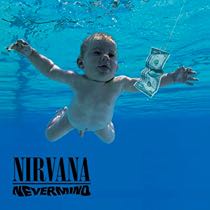 In 1991, few had any idea what Kurt Cobain, Krist Novoselic and Dave Grohl had in store with Nevermind. Nirvana’s second album not only represented a watershed moment for ’90s rock, making “alternative” larger than a niche genre, but made that style the primary musical choice for many teenagers and adults worldwide. Nevermind’s importance and influence on rock over the past two decades cannot be overstated. Nirvana’s seminal album marked alternative rock’s breakthrough to mainstream music audiences, as the Seattle grunge trio managed to connect to an entire generation of music fans. In case that isn’t evident, just take a glance at what 20 other musicians have said about the record’s importance in their lives. —Max Blau
In 1991, few had any idea what Kurt Cobain, Krist Novoselic and Dave Grohl had in store with Nevermind. Nirvana’s second album not only represented a watershed moment for ’90s rock, making “alternative” larger than a niche genre, but made that style the primary musical choice for many teenagers and adults worldwide. Nevermind’s importance and influence on rock over the past two decades cannot be overstated. Nirvana’s seminal album marked alternative rock’s breakthrough to mainstream music audiences, as the Seattle grunge trio managed to connect to an entire generation of music fans. In case that isn’t evident, just take a glance at what 20 other musicians have said about the record’s importance in their lives. —Max Blau